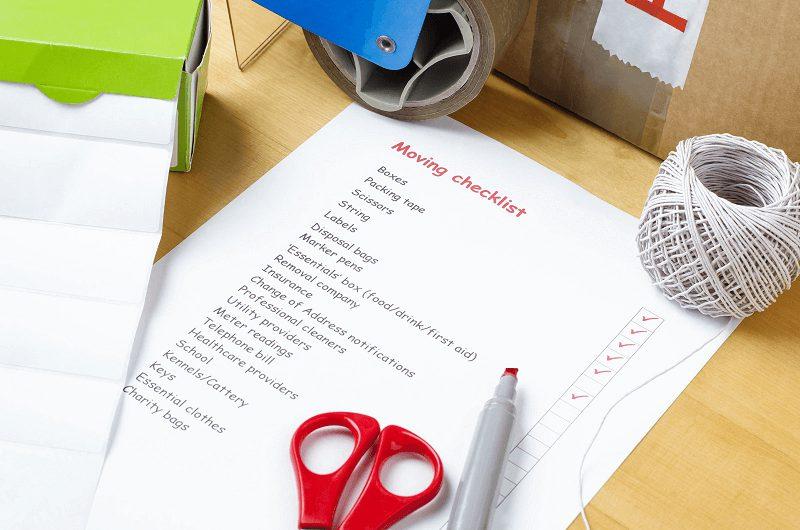Choosing the best moving date always comes down to budget, availability, and practicality. Understanding how these factors apply to you will ensure a stress-free move that is affordable and convenient.
At Moving APT, we’re all about making moving easier – and it all starts with picking the right moving dates. Do you want to deal with the summer rush (and heat)? Or would you rather have a flexible moving date during a season that won’t cost you extra?
We’ve used our insider experience and info to put together a guide to finding the best time to move.
Read on to learn more, and book your move today.
When is the Best Time to Move?
If you want to save as much as possible, shoot for a mid-week, mid-month move, somewhere between mid-September and April. Try and avoid major holidays like Thanksgiving, Christmas, and long weekends, too.
You can potentially save hundreds of dollars just by scheduling right and being a little flexible on your departure and arrival dates. Book your long distance move at least two months in advance so your movers can prepare accordingly. This will also give you plenty of time to pack.
A note on time:
While not as significant as the actual date of your move, choosing the right hour has its advantages, too. Being the first move of the day means a minimal risk of delays because of other pickups and dropoffs, plus your movers will have the energy to pay extra attention during loading and hauling.
A Guide to Moving All Year Round
If you have the liberty of choosing a flexible moving date, take a look at which seasons offer the most pros and cons:
1. Winter
The winter season will always be the cheapest option for moving. There’s less demand, and movers will lower their prices to attract a much smaller pool of potential clients.
While the savings are always a plus, a winter move can be a headache. If you’re moving someplace with snow or harsh winter conditions, a change of weather can throw off your entire schedule and end up costing you extra in penalties and late fees. Verify your mover’s cancellation policies so you can be prepared for emergencies.
Winter moving is usually a bargain, but try to avoid moving too close to Christmas or New Years. Any major holidays or vacations mean spikes in prices.
2. Summer
Summer is peak moving season. We absolutely advise against moving from June through August – and in some locations, it may even be packed during May and September, too.
Sure, you may have more free time to handle your move, but so will everyone else. That means all those college students and families with kids will be trying to schedule their moves and book a mover at the same time. Peak demand, peak prices.
As a side note, it’s also not very fun trying to lift, haul, and unpack during a heatwave. It may not cause delays like heavy snow and blizzards, but it’s not going to be a very pleasant experience.
3. Spring and Fall
Spring and fall are the sweet spot. They aren’t busy like summer, and the weather isn’t as unpredictable as the winter.
However, a move during spring or fall does take a bit of planning and finesse. September still has students moving in, and May still has students moving out – especially if you’re moving into (or out of) a college town. There are also long weekends that attract a bit more moving traffic.
We strongly recommend moving during March, April, October, and November. Keep these months in mind when you’re planning your relocation, and make sure you look at a calendar so you can avoid the odd holiday or long weekend.
5 Steps for Choosing the Best Moving Date
It takes more than just a calendar and some phone calls to schedule your move.
Here are 5 points to consider when you’re trying to find the best time to move:
1. Settle on a Budget
When you know how much you can afford to spend, you can better tailor your moving date to fit your budget. On average, the cost of a local move is $1,250, while the average cost of a long-distance move is $4,890. But, these numbers can increase or decrease based on the time of year, the distance traveled, and the required moving services.
For example, hiring long distance movers to pack, transport, and unpack your belongings will cost more than hiring a company to only load and transport your things. The same is true for renting a moving truck versus using a shipping container service.
Moving during the summer will also cost more than moving during the winter because it is the peak moving season. This means demand (and prices) are higher from June to August. The same is true for holiday weekends like Memorial Day, Independence Day, and Labor Day.
If you’re looking for a cheaper option, consider moving during the fall or spring when prices are lower. You might also want to consider a mid-week move to avoid the higher pricing during the weekend.
2. Consider Your Schedule
Do you have a lot of work deadlines? Do you have kids in school? Are you involved in extracurricular activities? All of these things can make it challenging to find time to complete a move.
Busy schedules leave little time to gather packing supplies, declutter your home, and complete other essential moving tasks. So, if you’re trying to decide on the best day to move, you’ll need to consider your current commitments.
Those with kids in school should consider a summer, spring, or winter break move as it is less likely to interfere with school and extracurricular activities. If planning your move around your kid’s schedule, be sure to organize childcare on the actual moving day so you can focus your attention on the move itself.
If you’ve got a hectic work schedule, consider a weekend move. This will give you more time to get things done during the week and avoid taking any time off from work. Just be aware that weekends are often the busiest times for moving companies, so you’ll need to book your services well in advance to secure the best moving date and pricing.
3. Think About How You Want To Move
The specific moving process you choose will significantly impact the best time to move. Some methods are fast and easy, while others are more time-consuming. If you have a specific date you must leave or arrive by, choosing the right relocation method can ensure you get your ideal moving date.
If you are moving on your own using DIY or pods, you’ll have more control over when you move. This is because you won’t be relying on the availability of a moving company.
However, these methods do require more time and effort to complete. You’ll need to factor in time to pick up or have a pod/moving truck delivered, pack your belongings, and load/unload everything.
If hiring full-service movers, you’ll need to be flexible with your moving date, as most companies book up well in advance. You can expect to pay a premium for services booked last minute, so it is best to give yourself as much time as possible to plan your move.
4. Consider the Type of Move You Are Planning
The distance between the starting point and destination of your move can play a big role in deciding on the best time to move.
Local moves only take a few hours and can usually be completed in a single day. This gives you more flexibility when considering the best moving day as you don’t have to worry about booking a hotel or taking time off from work. You can also complete a local move without professional help, which further increases your control over the moving process.
Long-distance moves are more complicated and often require professional assistance. These moves can take days or weeks to complete, depending on the distance involved. You’ll need to account for travel time, rest stops, and other factors when planning your long-distance move.
If you’re moving internationally, you’ll need to factor in even more time as you’ll have to deal with customs and other logistical issues. In this case, your moving date will be primarily determined by the availability of flights and other transportation options.
5. Take Account Of What You Are Moving
The stuff or type of property you want to move will also play a role in deciding on the best moving date. Not just because some items and properties require more care when packing and handling but also because some moving companies may or may not be able to accommodate certain items.
For example, if you have a piano or other large piece of furniture, you’ll need to make sure your chosen moving company is able to move it. The same goes for sensitive items like electronics and art.
Some companies specialize in moving these types of items, so you’ll need to do your research to find the right company for your needs – and then organize the best moving day based on their availability.
Residential moves are typically reserved for business hours on weekdays and weekends, meaning that your moving day will need to be during the daytime when it is light outside. This is to avoid disrupting your neighbors with the loading and unloading process, as well as to allow for a safer move overall.
Commercial moves are typically completed after hours and on weekends to maintain the flow of business. This means that the best day to move will need to be one where operations managers can be available in the evening or on a weekend to oversee the move and ensure everything goes smoothly.
Options for Carrying Out a Long-Distance Move
No matter when you plan to move, there are a variety of options that make it easy to get your belongings packed and transported to your final destination.
1. Full-Service Movers
If you’re allergic to packing peanuts, we get it. Packing is a pain, and dealing with all that bubble wrap and tape is a nightmare. Fortunately, some professional out of state movers offer full service moving: They’ll pack, load, haul, and unpack everything for you so you don’t have to. It costs a little more, but it’s way worth it if you want to minimize stress.
2. Moving Pods
An excellent option if you have the time and resources to pack belongings but lack transportation to get them from point A to B. Moving pods can be dropped off at your location, loaded up on your own time, and picked up and transported at your convenience. They provide a great alternative to hiring full-service movers, and they function kind of like a temporary storage unit that moves.
3. Hire Moving Labor
If you just need help with the heavy lifting or someone to only do the driving from point A to B, consider hiring moving labor to turn your long-distance relocation into a budget-friendly, mostly DIY move.
4. Do-It-Yourself
Of course, the most cost-efficient way to move is to pack, load, transport, and unload your own belongings. Whether you rent a moving truck or pack your vehicle for the drive yourself, a DIY relocation is possible with a bit of planning ahead of time (and a lot of physical energy).
Regardless of your choice, it is always best to shop around and get moving quotes from at least 3 companies to ensure that you get the best deal – and the best scheduling, too.
Moving Date FAQ
Why is the day of the week important when planning a long-distance move?
The day of the week makes a huge difference when it comes to the cost, convenience, and stress of moving day. Saturdays and Sundays are free days for most of the population, so most people will be trying to book on a weekend. If you can get a day off in the middle of the week, you can avoid inflated prices. Just be sure you schedule around traffic.
Does the season affect the best day to move?
Aside from the weather (like snowstorms and heatwaves) affecting how the loading and hauling goes, the season will also play a role in how much you end up paying. Summer is the most expensive and the most crowded. Aside from June through August, try to avoid any day where kids and college students are out of class.
Do specific days of the month affect moving costs or popularity?
The first and last days of the month are typically a lot busier. This is thanks to all those leases running out on the 30th, 31st, or 1st of the month. We recommend a mid-month, mid-week move so you can avoid the rush.
How can I find the least busy times for each moving company?
Every mover operates differently. Some may have more availability during the off season, and some may just keep their fleets locked down when there’s not much demand. If you want to get the best info possible for each mover’s availability, get in touch with them to see when they’re busiest. It also helps to keep your moving date flexible, so you can net some cool discounts.
Is there an ideal time of day to start a long-distance move?
It’s a good idea to start early in the morning. If you’re the first move of the day, there’s less chance of you waiting around because some other client forgot something or otherwise slowed down the whole moving team.
Make Moving Easy On Your Schedule
Picking the best moving date can be tricky, but it doesn’t have to be. If you take the time to consider your budget, choose helpful moving services, and research your options, you’ll be sure to find a date that works best for you and your movers. Just remember – the earlier you start planning, the better!
Ready to get started? Check out our moving cost calculator and moving checklist to start planning, and best of luck with your move!






